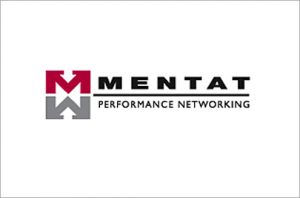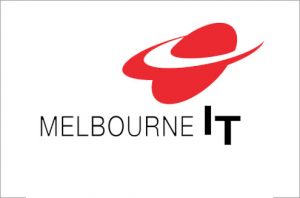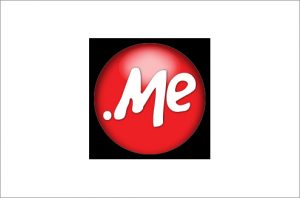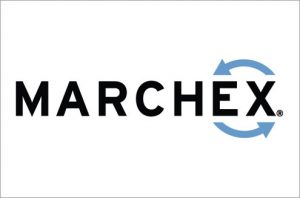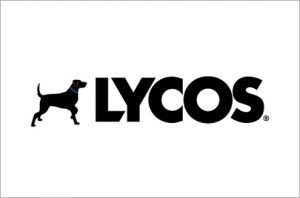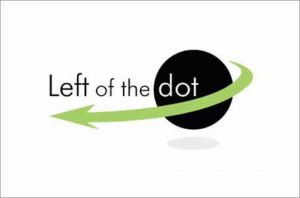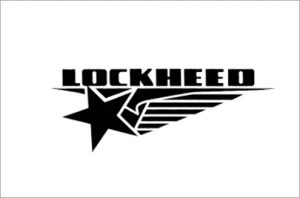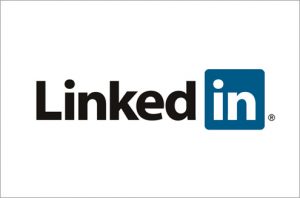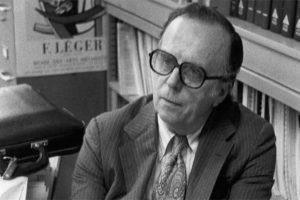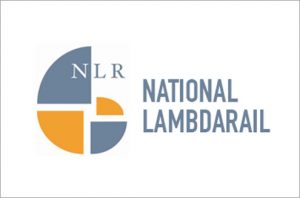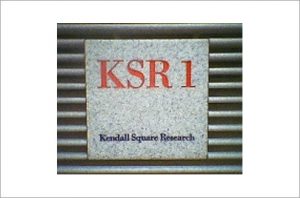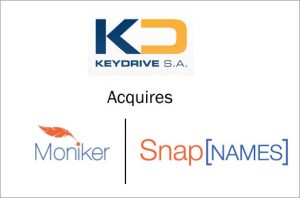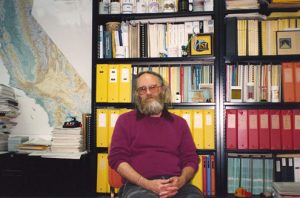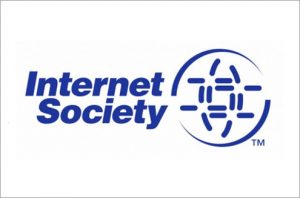On July 27, 1987, Lockheed Corporation registered the lockheed.com domain name, making it 81st .com domain ever to be registered.
The Lockheed Corporation (originally the Loughead Aircraft Manufacturing Company) was an American aerospace company. Lockheed was founded in 1912 and later merged with Martin Marietta to form Lockheed Martin in 1995.
Company History:
Formed in 1995 via the union of the nation’s second- and third-ranking defense contractors, Lockheed Corporation and Martin Marietta Corporation, Lockheed Martin Corporation is the world’s largest defense contractor. Lockheed Martin further broadened its lead over second ranking McDonnell Douglas with the January 1996 acquisition of Loral Corporation’s Defense Electronics and Systems Integration for $9.1 billion and $2.1 billion of assumed debt. Both Lockheed and Martin Marietta had evolved from relatively small aerospace manufacturers into titans of the global defense industry. A thorough treatment of Lockheed’s history appears elsewhere in this series, while the Martin Marietta saga is recounted here.
In 1905 a youthful Glenn Martin moved with his family to California. In the hills of Santa Ana, Martin built and flew his first experimental gliders. Not long afterwards Martin started a small airplane factory while working as a salesman for Ford and Maxwell cars. Martin applied his earnings from the auto sales, as well as money from barnstorming performances, to finance an airplane business. During this time he hired a man named Donald Douglas to help him develop new airplanes. Soon thereafter, Douglas and Martin collaborated to produce a small flight trainer called a Model TT which was sold to the U.S. Army and the Dutch government.
On the eve of World War I, Douglas was summoned to Washington to help the Army develop its aerial capabilities. Less than a year later, he became frustrated with the slow moving bureaucracy in Washington and returned to work for Martin, who had relocated to Cleveland. While there, Douglas directed the development of Martin’s unnamed twin-engine bomber. Neither he nor Martin was willing to compromise or shorten the period of time needed for the development of their airplane. For that reason the “Martin” bomber, arrived too late to see action in World War I. When Martin moved to Baltimore in 1929, Douglas left the company to start his own aircraft company in California.
Martin continued to impress the military with his aircraft demonstrations even after the war. In July of 1921, off the Virginia Capes, seven Martin MB-2 bombers under the command of General Billy Mitchell sank the captured German battleship Ostfreisland. Continued interest from the War Department led Martin’s company to develop its next generation of airplanes, culminating with the B-10 bomber. The B-10 was a durable bomber, able to carry heavy payloads and cruise 100 miles per hour faster than conventional bombers of the day. Martin’s work on the B-10 bomber earned him the Collier Trophy in 1932.
Although Martin continued to manufacture bombers throughout the 1930s, he also began to branch out into commercial passenger aircraft. With substantial financial backing from Pan Am’s Juan Trippe, Martin developed the M-130 “China Clipper,” the first of which was delivered in 1932. The clipper weighed 26 tons, carried up to 32 passengers and was capable of flying the entire 2,500 miles between San Francisco and Honolulu. Pan Am flew Martin’s planes to a variety of Asian destinations, including Manila and Hong Kong.
But Martin’s consistent development of military aircraft through the decade prepared it well for the start of World War II. The company produced thousands of airplanes for the Allied war effort, including the A-30 Baltimore, the B-26 and B-29 bombers, the PBM Mariner flying boat, and the 70-ton amphibious Mars air freighter. Martin invited some criticism in 1942 when he suggested that the United States could dispense with its costly two-ocean navy and defense of the Panama Canal if it had enough airplanes like the Mars.
After the war ended Martin continued to manufacture what few airplanes the Army and Navy were still ordering. In 1947 the company re-entered the highly competitive commercial airliner market with a model called the M-202. The development of later aircraft, the M-303 (which was never built) and the M-404, was a severe drain on company finances. Despite loans from the Reconstruction Finance Corporation, the Mellon Bank of Pittsburgh, and a number of other sources, the Martin Company was unable to generate an operating profit.
In July 1949 Chester C. Pearson was hired as president and general manager of the company. Glenn Martin, at the age of 63, was moved up to the position of chairman. Despite the new management and an increase in orders as a result of the Korean War, the Martin Company was still losing money. There were two reasons: first, production of the 404 was interrupted which, in turn, halted delivery and therefore payment for the aircraft. Second, the company hired hundreds of new but unskilled workers, which lowered productivity.
By the end of 1951 George M. Bunker and J. Bradford Wharton, Jr. were asked to take over the management of the company. As part of a refinancing plan Glenn Martin was given the title of honorary chairman and his 275,000 shares in the company were placed in a voting trust. Glenn Martin resigned his position in the company in May of 1953, but remained as a company director until his death. George Bunker succeeded Martin as president and chairman and directed the company for the next 20 years. Pearson, who was demoted to vice-president, later resigned. Bunker and Wharton were successful in arresting the company’s losses and by the end of 1954 declared the company out of debt. Martin, who never married, died of a stroke in 1955 at the age of 69.
Under its new leadership, Martin substantially reengineered a version of the English Electric Canberra bomber for the United States Air Force. Known as the M-272, the bomber was given the Air Force designation B-57. Martin built a number of scout and patrol planes, including the P5-M and P6-M flying boats, and expanded its interest in the development of rockets and missiles. One of Martin’s first projects in this area was the Viking high-altitude research rocket, followed by the Vanguard missile. By the 1960s the company was a leader in the manufacture of second generation rockets like the Titan II.
Despite the company’s return to profitability after the Korean War, the larger airplane manufacturers such as Boeing, Douglas and Lockheed had the advantage of size, which allowed them to compete more effectively with smaller companies like Martin, Vought and Grumman. These smaller companies, however, retained very different kinds of engineering teams which allowed them to continue developing unique aeronautic equipment and weapons systems.
The company was largely unsuccessful in achieving diversification in anything but its number of government customers. Martin aircraft was subject to the whims of the Department of Defense with its unstable pattern of purchases. By December of 1960 Martin’s last airplane, a Navy P5M-2 antisubmarine patrol plane, rolled off the production line. From this point forward the company produced only missiles, including the Bullpup, Matador, Titan and Pershing among them.
The Martin Company diversified through a merger with the American-Marietta Corporation, a manufacturer of chemical products, paints, inks, household products and construction materials, in 1961. After convincing the government that the merger would not reduce competition in any of either company’s industries, the two companies formed Martin Marietta. The diversification continued in 1968 with the purchase of Harvey Aluminum. The name of the subsidiary was changed to Martin Marietta Aluminum in 1971.
Martin Marietta became known for its space projects, but remained a major producer of aluminum and construction materials, during the late 1960s and early 1970s. In 1969 the company’s aerospace unit was selected to lead construction of the two Viking capsules which landed on Mars in 1976. In 1973 the company was awarded a contract to build the external fuel tank for NASA’s space shuttles.
Thomas G. Pownall advanced to the presidency of Martin Marietta in 1977 and chief executive officer in 1982, succeeding J. Donald Rauth. The same year Martin Marietta faced the most significant challenge to its existence in its history–a hostile takeover bid from the Bendix Corporation. Bendix, which had earlier abandoned an attempt to take over RCA, was led at the time by Bill Agee. For several years Agee had been divesting Bendix of its residual businesses, accumulating a $500 million “war chest” in the process. In 1982, he leveraged that fund into a $1.5 billion bid for Martin Marietta.
Martin Marietta responded with a surprising turnabout. CEO Pownall invited a friend, Harry Gray of United Technologies, to assist with a takeover strategy of their own. Pownall and Gray agreed to divide Bendix among them in the event that either Martin Marietta or United Technologies was successful in taking over Bendix. The takeover was stalemated until a three-way deal was arranged wherein the Allied Corporation agreed to purchase Martin Marietta’s holdings in Bendix on the condition that Bendix abandon its bid for Martin Marietta. The deal left Allied with a 39 percent ownership of Martin Marietta, but it was agreed that Allied’s voting share would be directed by Martin’s board until such time that Allied could sell its interest in Martin. Bill Agee joined Allied’s board of directors but later left the company. In the meantime, Martin Marietta went $1.34 billion into debt as a result of its takeover defense.
In order to reduce the company’s debt load, Pownall divested its cement, chemical and aluminum operations, and accelerated a reorganization begun before the takeover crisis. By 1986 debt was down to $220 million, giving Martin Marietta a comfortable debt-to-total capitalization ratio of 24 percent. In retrospect, Tom Pownall acknowledged that his company had emerged from Bendix’s takeover attempt as a more tightly managed and efficient business.
In the late 1980s, the company became active in the design, manufacture, and management of energy, electronics communication, and information systems, including the highly sophisticated level of computer technology known as artificial intelligence. Even with this diversification, 80 percent of Martin Marietta’s revenues continued to be generated via U.S. government contracts. The company supplies the Pentagon with a number of weapons systems, including the Pershing II missile, a major part of the MX missile; the Patriot missile, designed for air defense of field armies; and the Copperhead, a “smart,” or guided, cannon shell. Martin Marietta also developed a series of night vision devices for combat aircraft.
The company continued to build external fuel tanks for NASA’s space shuttle program, despite the temporary suspension of that program following the Challenger tragedy. Martin Marietta was also a major contractor for the American space station scheduled to be built in 1993. In another public project, the company was working on a new air traffic management system for the Federal Aviation Administration.
Norman R. Augustine, Tom Pownall’s hand-picked successor, succeeded his mentor as chairman and CEO upon the latter’s mid-1980s retirement. Augustine proved an auspicious choice. Anticipating the impending reductions in the U.S. defense budget, which slid from a high of $96 billion in 1987 down to $75 billion by 1992, the new leader and his executive team developed a three-pronged plan to survive the shakeout. Dubbed the “Peace Dividend Strategy,” the blueprint called for growth through acquisition, diversification into civil and commercial infrastructure markets, and maintaining financial health. Under Augustine, Martin Marietta dove into the wave of consolidation that swept over the American defense industry in the early 1990s. He guided the $3 billion acquisition of General Electric Co.’s aerospace operations in 1992. The merger, which added about $6 billion in annual sales, boosted Martin Marietta’s capabilities in digital processing, artificial intelligence, and electronics. Two years later, Martin Marietta expanded its capabilities in the wireless communications and commercial aviation markets with the acquisition of Grumman Corp. for $1.9 billion.
However, Augustine’s most dramatic move came in 1994, when Martin Marietta and Lockheed announced a “merger of equals.” It took the Federal Trade Commission several months to approve the union, which created the world’s largest defense company. While the federal government typically discouraged such massive combinations within the same business area, it regarded this consolidation in the defense industry with favor, since, according to one statement, it “boosts the industry’s efficiency and lowers costs for the government, which in turn benefits taxpayers, shareholders and employees.”
The spring 1995 exchange of stock created an advanced technology conglomerate with interests in the defense, space, energy, and government sectors serving the commercial, civil, and international markets. Daniel M. Tellep, chairman and CEO of Lockheed, held those same positions at the new company. Martin Marietta leader Augustine stepped into the office of president with the promise that he would advance into the top spots upon Tellep’s retirement.
Headquartered in Bethesda, Maryland, Lockheed Martin began a process of consolidation and reorganization even before the merger was completed in March 1995. An organizational consolidation grouped operations around four major business sectors: space and strategic missiles, aeronautics, electronics, and information technology services. The plan merged and eliminated dozens of offices and functions, rendering thousands of jobs redundant in the process. In fact, Lockheed Martin slashed its work force from a combined total of 170,000 people to 130,000 by mid-1995 and expected to furlough another 12,000 by 1999.
The unified company was involved in a number of well-publicized projects, including the Hubble Space Telescope, Motorola’s Iridium satellite telecommunications system, the F-22 Stealth fighter, Titan and Atlas space launch vehicles, the Space Shuttle program, and the space station Freedom.
The January 1996 acquisition of Loral Corp.’s Defense Electronics and Systems Integration business made it clear that Lockheed Martin would not soon relinquish its number-one status. Established in 1948, the Loral division was a $6.8 billion operation and a global leader in defense electronics, communications, space and systems integration. The acquisition was initially categorized as a sixth division, Tactical Systems, at Lockheed Martin. Anthony L. Velocci Jr., an analyst with Aviation Week and Space Technology, predicted that Lockheed Martin would encounter difficulty in consolidating the Loral operations into its own recently-reorganized divisions, but that the acquisition would bring economies of scale and boost electronics, tactical systems, and information technology.
Loral Chairman and CEO Bernard Schwartz held those same positions at the newly-formed Lockheed Martin subsidiary and was invited to join the latter company’s board of directors. Schwartz, Tellep, and Augustine became the first members of Lockheed Martin’s three-man office of the chairman as a result of the acquisition.
